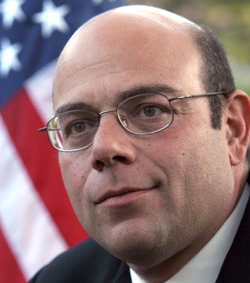
Garen Yegparian
BY GAREN YEGPARIAN
Two weeks ago I had the honor of attending a friend’s daughter’s bat-mitzvah. That’s the coming of age ritual for Jewish girls.
Aside from noticing similarities that were the result of borrowings from Judaism into Christianity and trying to recognize words in Hebrew by likening them to the little Arabic I still remember, one thing struck me, hard, sharp, biting, shudder inducing: the millennial continuity embodied in the rite I was observing and, in contrast, how much we’ve lost.
The last time I had this sense was twelve years ago, on my last visit to Lebanon, where I saw the connectedness with their history that people had in the villages and towns they’d occupied since time immemorial. I may be developing a fear of visiting Native Americans in their ancestral homelands, since they, and other indigenous peoples, have also managed to retain a good portion of that connectedness to place, cosmos, and tradition.
This discontinuity of ours does not rise from the most obvious cause you’re likely to think of, not exclusively.
It all started with our adoption of Christianity. With the adoption of a non-native religion, we shore off many connections to every rock, tree, cloud, mountain, lake, etc. that had been built up over thousands, perhaps tens of thousands, of years of living in the same place. These connections were embodied in our then-worshipped deities, through which we explained/understood all that was. When a new explanation, coupled with its code of behavior, was adopted, naturally, much of the old had to be discarded. Vahagn and Christ could not occupy the same sacred place simultaneously. Sure some of the showy stuff, the festivals (leaping over fire, spraying each other with water, blessing grapes), were co-opted by the church and lived on under the new rubric, to help bridge the transition and give credibility to the new religion. But, in the process they lost their true meaning and connection to life.
That was the first, chronologically fairly compact, blow. Then came two other factors, which ran for a long time, and overlapped. Invasions of barbarian, nomadic groups from the east disrupted life in the Armenian highlands. It instigated repeated moves/migrations and contributed to the impoverishment of the country. All this made the millennial continuity weaker and more remote.
As the invaders became more settled, consolidated power over and commenced ruling our homeland, along the way adopting Islam, the pressure was on to convert. By this time, the Armenian Apostolic Church, being thoroughly established and, ultimately, becoming the only remaining Armenian institution, was in a position to ostracize, even “expel” from the nation of Armenians, anyone who did convert. Thus did many of our compatriots get totally ripped away from their roots and our traditions. Connections to our past and place took another blow.
The coup de grâce was, of course, the Genocide, compact chronologically and all-encompassing. Any remaining connection was either utterly destroyed (for those of us who ended up in the Diaspora), or masked under an unfathomably thick cover of conversion (though sometimes not) and living a hidden, extremely circumspect, life for four generations (those remaining in Western Armenian lands or going through the Soviet reinvention). How are the connections to meaning and cultural importance of history, place, and tradition to be maintained while pretending to be something else? How does a child growing up in this environment internalize what is hers/his and what’s not? What about a grandchild, or great-grandchild?
The utter horror of the irretrievable loss we’ve suffered is beyond words, perhaps beyond even conceiving. Let’s work to at least regain our lands, then try to reconstruct and re-imagine what we were, are, and want to be.
Source: Asbarez
Link: DIScontinuity
